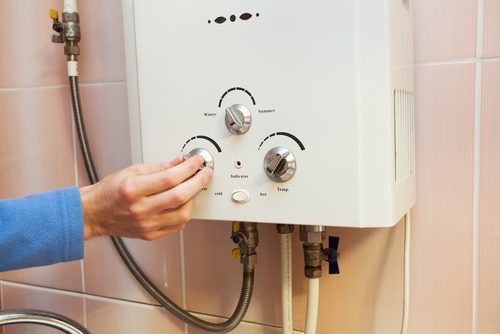Effective Methods to Care for Your Home's Hot Water System Effectively
Effective Methods to Care for Your Home's Hot Water System Effectively
Blog Article
What are your insights and beliefs about Tips on Maintaining a Water Heater?

Warm water is essential for everyday comfort, whether it's for a revitalizing shower or cleaning dishes. To ensure your warm water system runs efficiently and lasts longer, normal maintenance is essential. This write-up supplies practical tips and understandings on exactly how to preserve your home's hot water system to avoid disturbances and expensive repairs.
Intro
Maintaining your home's warm water system might appear complicated, yet with a couple of straightforward actions, you can ensure it operates smoothly for years to find. This overview covers whatever from comprehending your warm water system to DIY upkeep pointers and knowing when to contact specialist help.
Relevance of Maintaining Your Warm Water System
Regular upkeep not only prolongs the life expectancy of your hot water system but additionally guarantees it operates efficiently. Disregarding maintenance can result in decreased efficiency, greater energy expenses, and also early failure of the system.
Indicators Your Hot Water System Requirements Maintenance
Recognizing when your hot water system needs attention can avoid significant concerns. Keep an eye out for indicators such as irregular water temperature level, odd noises from the heating system, or corroded water.
Purging the Hot Water Heater
Purging your hot water heater removes debris build-up, improving performance and prolonging its life.
Checking and Replacing Anode Rods
Anode rods avoid rust inside the tank. Examining and replacing them when worn out is essential.
Complex Issues Requiring Specialist Help
Examples include major leakages, electric issues, or if your water heater is regularly underperforming.
Regular Expert Maintenance Benefits
Specialist upkeep can include extensive assessments, tune-ups, and making certain conformity with security standards.
Inspecting and Readjusting Temperature Settings
Readjusting the temperature level settings guarantees optimal efficiency and security.
Do It Yourself Tips for Maintenance
You can do several maintenance tasks yourself to keep your warm water system in leading condition.
Looking for Leakages
On a regular basis evaluate pipes and links for leaks, as these can bring about water damages and higher costs.
Comprehending Your Warm Water System
Before diving right into maintenance jobs, it's useful to recognize the fundamental components of your warm water system. Generally, this consists of the hot water heater itself, pipes, anode rods, and temperature controls.
Monthly Maintenance Tasks
Normal month-to-month checks can aid capture small problems before they rise.
Evaluating Stress Alleviation Valves
Evaluating the stress relief valve guarantees it works appropriately and avoids too much pressure buildup.
Protecting Pipelines
Insulating warm water pipes minimizes heat loss and can conserve power.
When to Call a Professional
While DIY upkeep is advantageous, some concerns require expert proficiency.
Conclusion
Normal maintenance of your home's warm water system is vital for performance, longevity, and expense financial savings. By adhering to these suggestions and knowing when to look for expert aid, you can make sure a reputable supply of warm water without unexpected disruptions.
How to Maintain an Instant Hot Water Heater
Before tinkering with your hot water heater, make sure that it’s not powered on. You also have to turn off the main circuit breaker and shut off the main gas line to prevent accidents. Also turn off the water valves connected to your unit to prevent water from flowing into and out of the appliance. 2. When you’re done, you have to detach the purge valves’ caps. These look like the letter “T†and are situated on either side of the water valves. Doing so will release any pressure that has accumulated inside the valves while at the same time avoid hot water from shooting out and burning your skin. 3. When the purge valves’ caps are removed, you have to connect your hosing lines to the valves. Your unit should have come with three hoses but if it didn’t, you can purchase these things from any hardware or home repair shops. You can also get them from retail stores that sell water heating systems. Read the user’s manual and follow it to complete this task properly. When the hosing lines are connected, open the purge port’s valves. 4. You should never use harsh chemical cleaners or solutions when cleaning your unit. Make use of white vinegar instead. It should be undiluted and you’ll probably use about 2 gallons. 5. Now flush your water heater. This task should probably take about 40 minutes. We can’t give you specific directions for this because the procedure is carried out depending on the type, model and brand of your heater. With that being said, refer to the user’s manual. 6. When you’re done draining the unit, you have to turn off the purge port valves again. Remove the hosing lines that you earlier installed on each of the water valves. Put the valve caps (purge port) back in their respective places and be very careful so as not to damage the rubber discs that are found inside these caps. 7. Now that everything’s back in place, check your user’s manual again to find out how to reactivate your water heating system. 8. Once it is working, turn one of your hot water faucets on just to let air pass through the heater’s water supply pipes. Leave the tap on until water flows smoothly out of it. https://www.orrplumbing.com/blog/2014/september/how-to-maintain-an-instant-hot-water-heater/

As an enthusiastic person who reads on Tips on Maintaining a Water Heater, I imagined sharing that editorial was really useful. Don't hesitate to take the time to distribute this page if you liked it. Thanks a lot for being here. Come back soon.
Browse Our Site Report this page